When thinking of board game publishers one that is regularly forgotten about is Endless Games. Created by a group of board game industry veterans Mike Gasser, Kevin McNulty and Brian Turtle; the company has focused on a number of different genres of board games over the years. The company is mostly known for creating adaptations of famous game shows and recreating old classic games. The company has created a number of original games over the years as well though. Arguably one of their most famous original games was the 2009 party trivia game Name 5. Name 5 is a game that I have seen around for a long time that I have never had the chance to check out. Thanks to receiving a free copy of the game from Endless Games to review though I finally got a chance to check it out. Name 5’s title does a good job telling you what the game is about which is ultimately a solid little party trivia game that has some issues.
We would like to thank Endless Games for the review copy of Name 5 used for this review. Other than receiving the review copy we at Geeky Hobbies received no other compensation. Receiving the review copy had no impact on the content of this review or the final score.
How to Play Name 5
Setup
- Choose whether to play in teams or individually. The game recommends playing in teams so the rest of these instructions will be written as if you are playing a team game. If you choose to play individually you will have to alter the rules as necessary.
- Divide the cards into two piles. Place one pile in front of both teams.
- Each team places their token on the starting space.
- The team with the youngest player will start the game.
Playing the Game
To begin a turn one of the players on the current team will roll the die and move their token the corresponding number of spaces.
Depending on what space their token landed on they will draw a card and read the category corresponding to the space. The timer is then turned over.
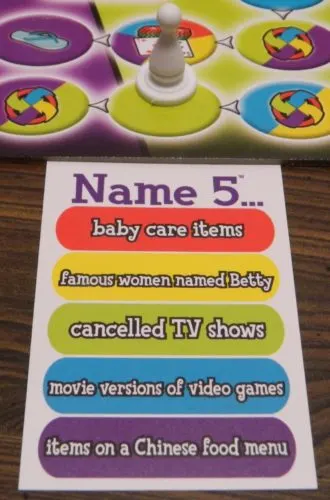
This player landed on a green space. Therefore they will have to name five cancelled TV shows within the time limit.
All of the players on the team have until the timer runs out to try to name five things that meet the chosen category. If there is a questionable answer the player can explain their answer within the time limit to try and convince the other players. For any questionable answers the players will vote on whether it should count.
If the players successfully name five things within the time limit they will get to roll the die again and move their token. They will then get to attempt another card. This will continue until they either fail the challenge or after they have rolled the die five times in a row.
When a team fails a challenge or they have rolled five times, play will pass to the other team.
Special Spaces
The Name 5 gameboard features a number of special spaces which alter the gameplay. These special spaces include the following:
All Play
Each All Play space features two different colors. When a team lands on this space they will choose one of the colors to be their color (before looking at the card). The other team will get the other color. One player from each team will read the card to see their challenge for the round. When both players are ready they will announce their team’s challenge. Both teams will then compete at the same time. The first team to name five things will win the challenge and will get to roll the die. If neither team can complete the challenge another card is drawn and played.
Players can also choose to use the variant rule. The variant rule is the same except that the first team to name one thing from their category wins the challenge. If both teams answer at the same time the first team to come up with a second answer wins the challenge.
Flip Flop
The team that lands on this space will draw a card and read out the category corresponding to the color of the space. The team that landed on the space has 10 seconds to provide an answer that fits the category. If they are able to do so play passes to the other team who has ten seconds to come up with another answer. Teams alternate taking turns until one team fails to come up with an answer or they repeat an answer already given. The last team to provide a correct answer will get to roll the die next.
Wild
If a team lands on a wild space they will look at the card and choose which category they would like to use. Otherwise this space is treated like any other space.
Double Down
When a team lands on this space they will look at the card and choose two of the categories that they will attempt. They will have 30 seconds to provide five answers for both categories. If they complete both challenges they will get to roll the die and move their token twice the number of spaces rolled. If they fail play will pass to the other team.
End Game
When a team nears the end of the board they must reach the final space by exact count (the arrow doesn’t count as a space). If they roll too high of a number they will stay on their current space and try to complete the corresponding challenge. If successful they can roll again to try and reach the final space. When a team reaches the final space by exact count they will get to try the final challenge.
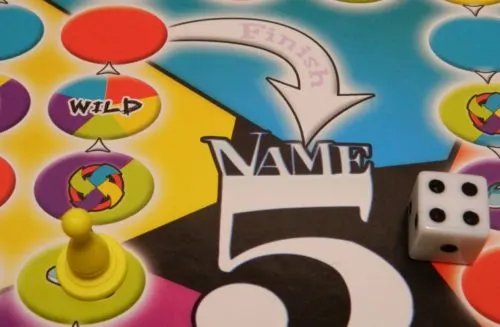
The yellow team is four spaces away from the final space. As they rolled a four they will move their piece to the final space. They will now get to attempt the final challenge.
For your first attempt at the final challenge you will draw a card. Your team has 90 seconds (flip over the timer three times as the timer is 30 seconds) to try and complete all five challenges. If a team fails to complete all five their turn will end. On their next turn they will have to complete four of the five challenges within 90 seconds. On their third attempt they will have to complete three challenges in 60 seconds. For their fourth attempt they will have to complete two challenges in 30 seconds. Finally they will only have to complete one challenge within 30 seconds.
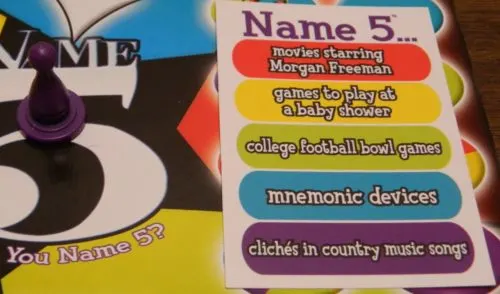
This player has reached the final space. If they just reached the space they will have to correctly finish all five categories within 90 seconds. If they have already failed the challenge they will have to complete a number of categories based on how many times they have failed.
The first team to complete the final challenge wins the game.
My Thoughts on Name 5
The old phrase don’t judge a book by its cover is something that I generally like to apply to board games. While there are a number of board games that you can get a pretty good idea about just by looking at them, there are quite a few that defy expectations (both positively and negatively). While I generally don’t like to judge a board game by its box, in the case of Name 5 your first impression will likely be right on the money. As a matter of fact you will basically know what to expect from just reading the game’s title.
As the title Name 5 implies the whole game revolves around trying to name five things that match a particular category. For example one of the categories in the game is cancelled TV shows. The team that would get this category would then have to name five canceled TV shows before they run out of time. This is not a wild new idea as the concept of thinking of things that fit a certain category has been around for quite some time. There are other boards games that utilize a similar mechanic and this mechanic has been used in party games for a long time. As this is the driving force behind the game your opinion of Name 5 is going to depend on your opinion of this mechanic. If you like these type of games you will likely enjoy Name 5, but the opposite holds true as well.
Personally I have always been somewhere in the middle with regards to this mechanic. It isn’t my favorite mechanic, but it is occasionally fun trying to come up with a number of things that fit a certain category. In a way Name 5 feels like a party trivia game. Instead of having to know specific facts though you only need to have a general understanding of various categories so you can name five things that fit that category. On a timer this can be pretty fun as you race to come up with enough answers in time.
With such a simple main mechanic it is not surprising that Name 5 is really easy to play. As the main mechanic it is so straightforward that you can teach the game to new players within minutes. None of the mechanics in the game are particularly difficult to understand. Thus Name 5 is the type of game that everyone can play so it should appeal to people that don’t play a lot of board games. With the game being so simple I was a little surprised that the game’s recommended age was 12+. I would say that this is more about the categories themselves rather than the game’s difficulty. From the categories I played there weren’t any objectionable categories, but most of the categories are things that younger children won’t really know which will likely lead to them struggling with the game.
As Name 5 is a game that relies heavily on the name five items in a category mechanic, it was crucial that the categories on the cards were good. In this regard I would say that Name 5 is pretty hit and miss. I mostly say this because there can be widely differing difficulty between the categories. Some categories are really easy where there are probably a hundred potential answers while others may only have five answers total. The difficulty of the categories will also somewhat depend on the player’s knowledge base. A category may be easy for some people and basically impossible for others. A lot of the categories are between these two extremes as well. This discrepancy between the difficulty of the categories adds more luck to the game than I was hoping. The better team will likely win the game, but there will be times where a team wins because they got easier categories.
Due to how Name 5 is designed most of the categories are open ended. For some categories it is obvious what should and shouldn’t count. There will be cases where there are some borderline cases, but there won’t be much disagreement over what should and shouldn’t count. In other categories though there will be plenty of answers that aren’t so clear cut. As the game doesn’t provide possible answers the players have to agree on what should and shouldn’t count. Like many party games this can be contentious as players will argue over what should and shouldn’t count. This is made worse by the fact that the other team has a vested interest in voting down your answers. There is also the fact that there will occasionally be categories that only one player/team knows while the other doesn’t. In this case the players can just make up answers and the other team will have no idea if they are actually giving real answers. For Name 5 to go smoothly players need to agree that they will play the game in good faith and not take the final result too serious. This will make the game go smoother and also make it more enjoyable.
Outside of the Name 5 mechanic the game features a number of other mechanics. The other main mechanic in the game is the idea that players/teams will be moving around a gameboard. Each time you complete a category you will get to take an additional turn. This allows you to roll the die again and move your piece further. The more categories you get right the more you will get to move. By utilizing a die though the game adds luck to the game. Getting more categories right will normally let you move further, but if you keep rolling low numbers while the other team rolls high numbers they will be able to move as far or farther than you do even if they get less categories right. I am not a huge fan of this mechanic as it mostly just adds luck to the game. I honestly think the game would have been better served ditching the board entirely.
The gameboard also leads to the addition of a number of special rounds. I had some mixed feelings about these special rounds. I kind of liked the Flip Flop round as it forces the teams to alternate giving answers. This tests teams’ knowledge more than their luck. There are some rounds that could take forever though as there are many possible answers. The Wild mode is nothing special, but it eliminates a lot of luck as players can choose what category they want. I also thought the Double Down round was interesting. Having to finish two categories within 30 seconds is pretty fun and challenging. It allows you to gain a lot of spaces though if you roll a high number and complete the challenge in time.
The special round that I have the most mixed feelings about is the All Play round. In principle I actually really like the idea. Having the teams compete over who can name five things first from their category can be fun as it adds additional competition. The player whose turn it is also gets to choose which category they and the other team will get which gives them the advantage they should have due to it being their turn after all. The problem with this special round though is that it becomes a chaotic mess once it begins. You have members from both teams shouting out answers at the same time. As you are focused on coming up with answers for your own category you aren’t verifying the answers that the other team is coming up with. Therefore you have to take the other team at their word when they come up with their fifth answer. As it stands this round is not worth playing as it is more of a headache than it is worth. The good news is that I think it could be easily fixed by just having the two teams write down their answers on paper or a dry erase board. When a team is done they can show the other team their answers so they can confirm them.
All of this culminates in the end game. I had some mixed feelings about the end game. First I never like when games utilize the mechanic where you have to reach the final space by exact count. I just think this acts as a catch up mechanic for players that fall behind. As for the final challenge itself in theory I like it. The idea of having to run through a bunch of categories within a short time period is fun. The problem is that it is almost impossible to finish it in your first two attempts. Unless you draw a card that has a bunch of easy categories you won’t finish them all in time. There will likely be at least one or two categories that you can’t even come up with five answers to. Therefore it mostly just extends the game’s length as you fail a couple times until you get to one of the more manageable levels of difficulty. I think you should just cut out the first and possibly even the second attempt as players are unlikely to ever finish them in time anyway.
As for Name 5’s components I found them to be pretty average. You basically get what you would expect from this type of game. The gameboard is pretty generic. The sand timer and pawns are standard pieces. As for the cards they get right to the point which is what you would expect. As for the quantity I give the game some credit as it features 144 cards. With each card featuring five categories and being double sided the game has 1,440 different categories. You will be able to play quite a few games before you will run into a repeat.
Should You Buy Name 5?
Name 5 is arguably in the running for the most descriptive board game title of all time. Basically all you need to know about the game can be found in its title. The whole game revolves around being given a category and having to name five things that fit that category within a time limit. While this mechanic has been used by other board games and party games over the years, the mechanic is simple and fun. It is fun trying to list five things that fit inside a category within 30 seconds. The categories in Name 5 can be a little hit or miss as some can be too easy or hard. Some categories can also be a little subjective which can lead to arguments if players take the game too seriously. Otherwise the game adds a gameboard which adds some luck as how well you roll will have an impact on how well you will do in the game. This also introduces some special rounds which are fun even though the All Play round is chaotic. Finally the end game is kind of fun even though it extends the game too long in my opinion.
My recommendation for Name 5 is actually pretty simple. If you don’t really care for the name five things in a category premise or are looking for a deeper game, Name 5 won’t be for you. People who like simple party trivia games though and like the idea of naming things that fit a category should enjoy their time with Name 5.
Buy Name 5 online: Amazon

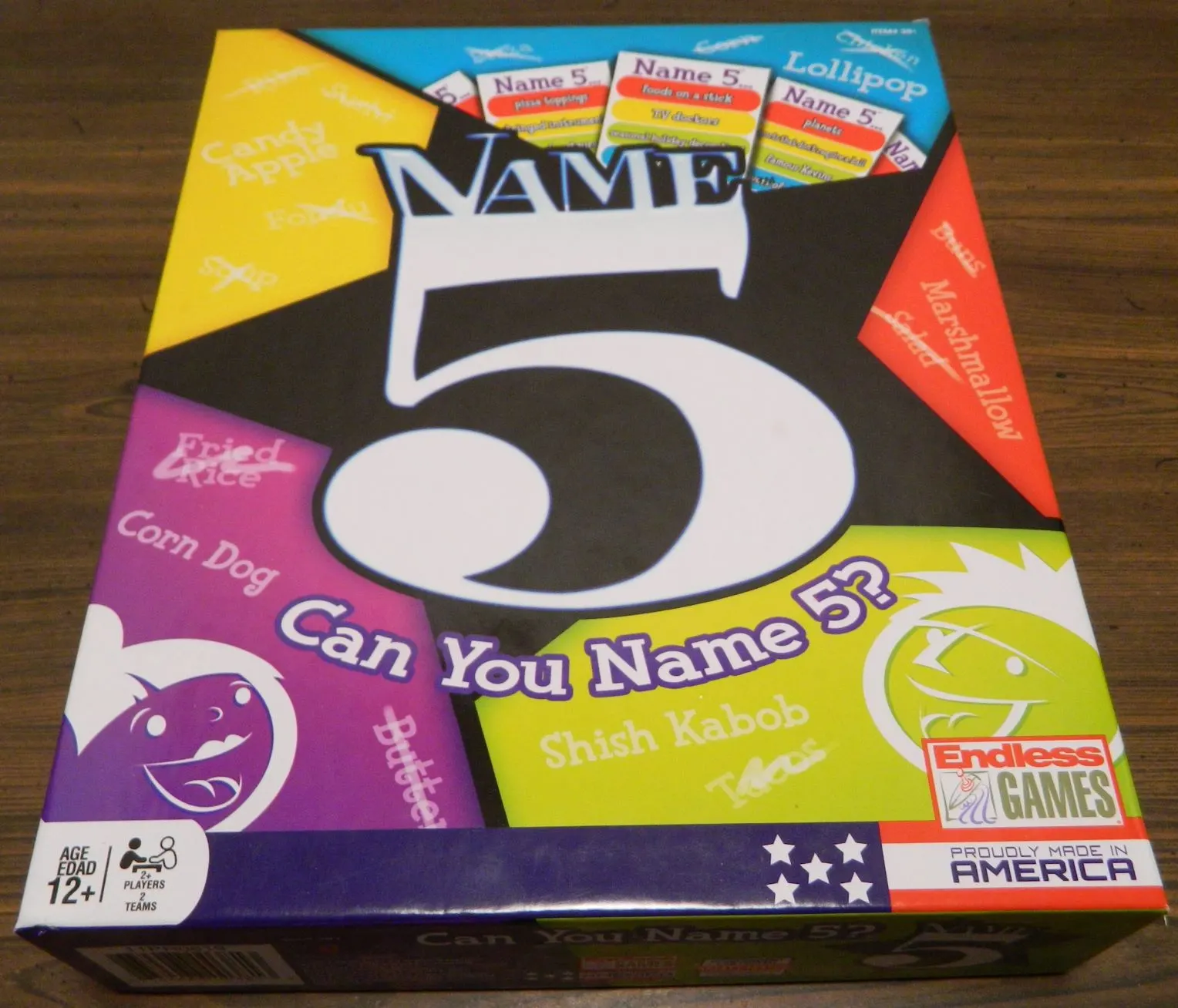
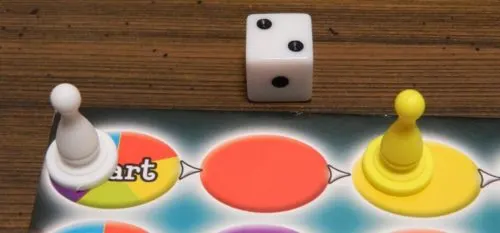
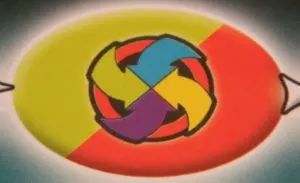

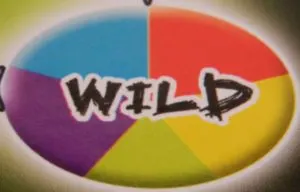
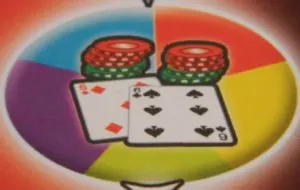
Endless Games
Thursday 25th of June 2020
[…] A special thanks to Geeky Hobbies for their thorough review of Name 5! Check out the article […]